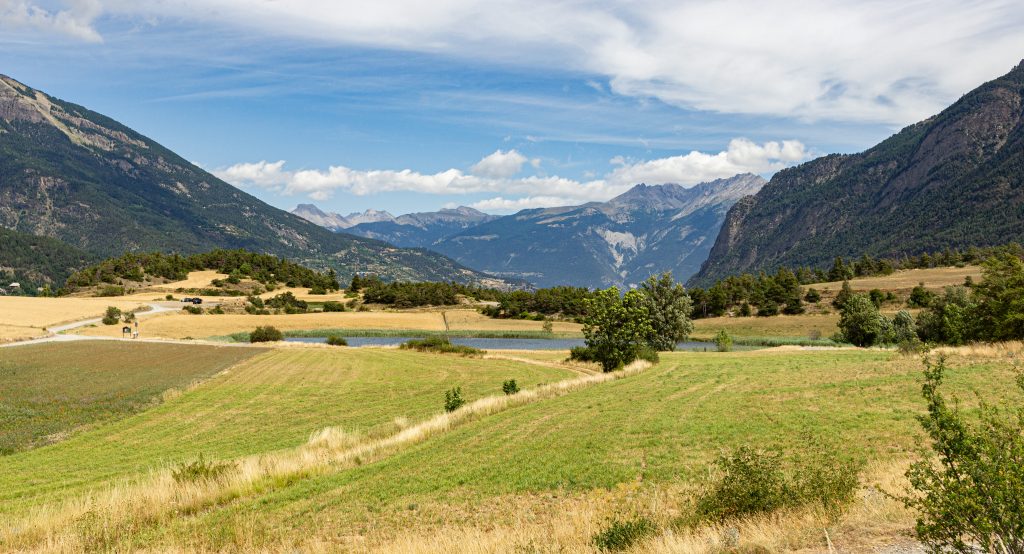The Italian Alps and Appenines
The Italian Alps cover an area of consists of 27.2% of the whole of the alps or 81,090 square km, which is 31,300 square miles. Common wildlife species to see are Chamois (pretty plentiful) these can often be found low in the mountain valleys, Alpine Ibex nearly pushed to extinction during the 19th century, but recovering well now which are expert climbers and can be spotted often on incredibly steep cliffs and Marmots which are actually members of the squirrel family, but live only on the ground, and have become extremely capable diggers, even in frozen soil.

The Apennines mountains which lie further South formed the last refuge of the Italian wolf by in the 1970s, when they were given full protection. At this time there were only 70-100 wolves left in Italy. Thankfully since then their numbers have climbed steadily, and there are now thought to be around 2000 now living in Italy, though this population is almost completely confined to the Apennine and Alpine regions of Italy. The majority are in the Apennine mountains, though the Alps are clearly good habitat, as the number is climbing fast with at least 300 thought to be living in the Alps in 2018, this number has doubled since 2015. While no significant survey has been done since, one can only assume that the number has grown significantly in the last 2 years.
The Italian Alps wolves consist of 51 packs. While wolves howl less in Europe due to human persecution over the centuries, than they do in the USA, with this much territory competition, they do howl from time to time as a way of spacing themselves out without having to fight.
As with elsewhere, Italian wolves are not easy to see, however in some ways they are an easier wildlife holiday for families than many other options. This is because they are almost entirely resting during the day, allowing for other family friendly activities. The only times of day that it is worth looking for wolves is in the early morning, and in the evening.
Finding a high up point overlooking a valley, if you are lucky you will see the animals moving below. When particularly lucky, you might hear the eerie howl of a wolf. There are a variety of reasons for howling, but if territory is in dispute, the whole pack will howl together and you will usually hear the other pack responding.
There is a population of about 80 bears in the region of Trentino in the central alps, and this population is growing, though there are calls for culls. The Marsican bear whose territory lies south in the Appenine mountain range, also has a population of 50 -60 bears left. This population has been stable for the last 10 years.
Despite plentiful territory, Lynx do not seem to have successfully returned, and only exist close to the border with Switzerland and Slovenia where healthy population does still live, and therefore occasionally wander over the border.
Wolves howling in Italy
- Tim
- February 15, 2022
Greenland is loosing 30 million tonnes of ice per year.
- Tim
- April 13, 2024
Should wolf hunting return to Western Europe?
- Tim
- March 28, 2024
Should wolves in Europe have their conservation downgraded? Are they really stable enough to be hunted again
- Tim
- March 22, 2024
Sperm whales can take over an hour to decide together which way to go
- Tim
- February 14, 2024
West african Lion spotted in a reserve in Chad that has not recorded one since 2004
- Tim
- April 27, 2023
Wolves in the Alps are growing fast – 25% up in one year
- Tim
- March 10, 2023
What to do for a holiday, when you are concerned about planes in the time of COVID
- Tim
- July 15, 2022
Return of the bear wolf and lynx to France and western Europe
- Tim
- March 11, 2022
Wolves continue to spread across France
- Tim
- December 19, 2021
Could Bialowlieza forest be destroyed by forests on borders?
- Tim
- December 16, 2021
Are wolves breaking into new territory in Europe?
- Tim
- June 30, 2021
Whipsnade zoo shoots two Bears after they escape
- Tim
- May 24, 2021
Urgent news update – Indonesia deforestation
- Tim
- December 18, 2020
First wolf sighting in northern France in 100 years
- Tim
- November 27, 2020
Wild boar shot at a school in Rome
- Tim
- November 16, 2020
Belgium has its own Wolf population
- Tim
- May 23, 2020
The death of 3 Marsican bears
- Tim
- January 23, 2019
News in Brief: The Persian Leopard, Accidental Death of one of the last male Marsican bears, and a mutant enzyme which eats plastics
- Tim
- May 14, 2018
